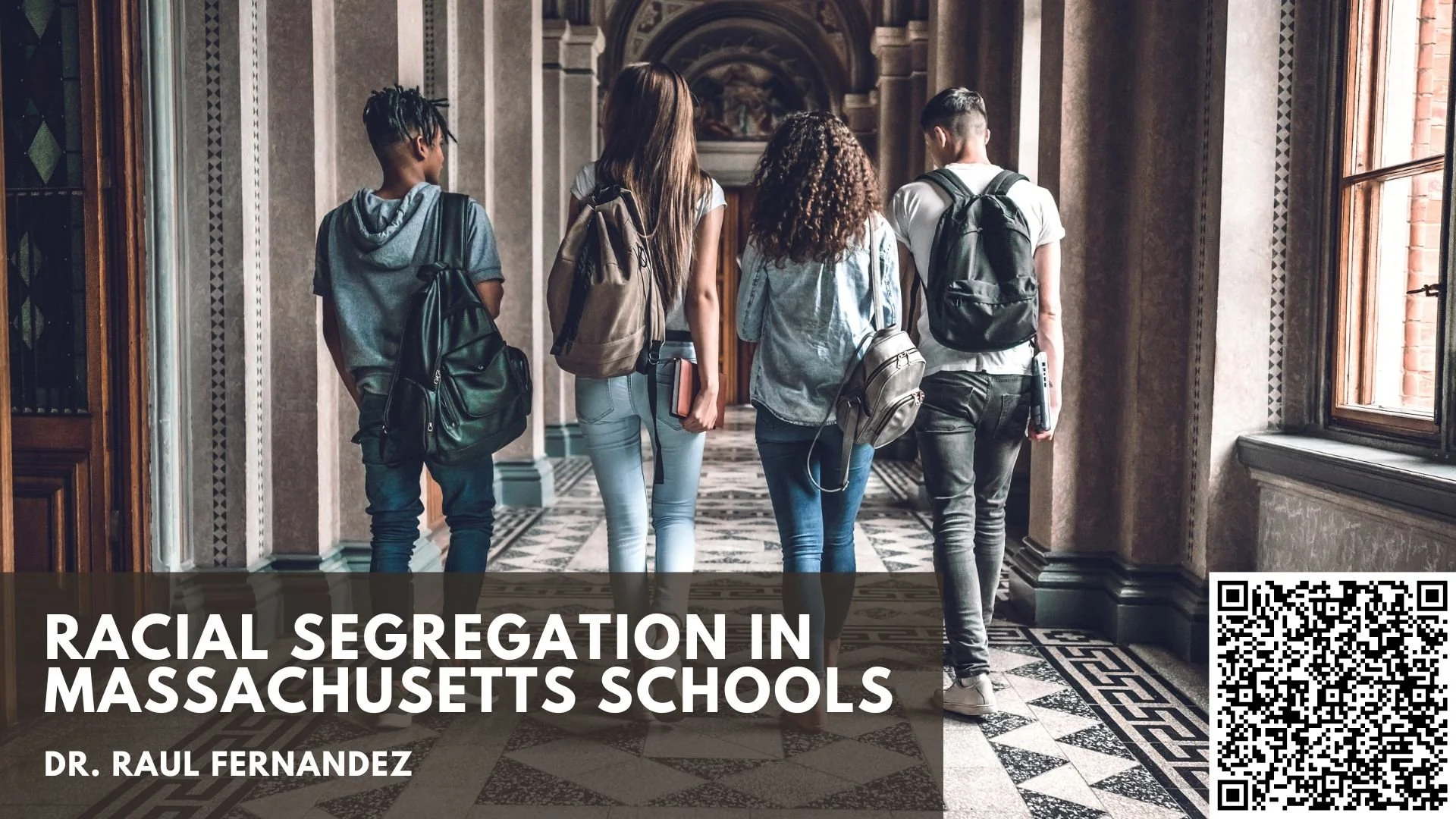School Segregation
My interest in school segregation has been bubbling for years. I built out a two-part lesson on the topic for my Diversity & Justice in Education course a few years back and launched a full School Segregation course in 2024. I also recently began teaching the course to school principals and central office staff as part of the Dr. Carol Johnson District Leadership Fellowship, a partnership between Boston University and the Boston Public Schools.
Meanwhile, as Chair of the Department of Elementary & Secondary Education’s Racial Imbalance Advisory Council, I co-authored Racial Segregation in Massachusetts Schools, the first report in a generation to evidence the substantial and pervasive disparities between segregated white and nonwhite schools in Massachusetts. Our work earned coverage in the Boston Globe, WBUR, the Bay State Banner and NBC10 Boston.
In brief, our findings revealed that school segregation in Massachusetts is pervasive.
60% of MA public school students attend a racially segregated school
Nearly 2/3 of public schools are segregated, including 16% classified intensely segregated
Of the 103,013 students at intensely segregated nonwhite schools – those with the worst outcomes – 65% are Latino and 25% are Black
There are two central problems with racial segregation in MA schools. The first and most urgent problem involves those 100,000 students at intensely segregated nonwhite schools.
Compared with intensely segregated white schools, we found wide gaps in educational outcomes across all available measures, including out of school suspensions, chronic absenteeism, high school graduation and college matriculation rates, and test scores.
The report also showed an astonishing 48-point gap on the state’s Accountability Percentile, with intensely segregated white schools ranking at 66.32% compared with intensely segregated nonwhite schools at just 18.72%.
The second problem relates to the lack of access to diverse perspectives and experiences for all students who attend segregated schools.
In Massachusetts, white students have the least access to diverse perspectives, depriving them of opportunities to learn across difference, to practice critical skills like cultural responsiveness, to identify and address their biases, and to dialogue across difference.
The racial dialogue gap – our ability to talk about race across race – inherent in segregated schooling can have larger societal impacts, like when kids from segregated environments grow up to shape policies and allocate resources in ways that impact those they know little about.
Check out this presentation for a quick review of the report with some of my own additional recommendations, including a) unprecedented investments in urban schools, b) deeper investments in cross-district programs, c) creation of inter-district (regional) magnet schools, and d) creating a coalition to promote urgency and accountability.
Next up, I’m excited to partner with the BU Initiative on Cities to host a national conference on segregation. Coming to Boston University in October 2025, the conference, Urban Segregation: (Re)Conceptualization, Collaboration, Action, will bring together academics, advocates, and policy makers to focus on segregation in housing, education, and transportation.

